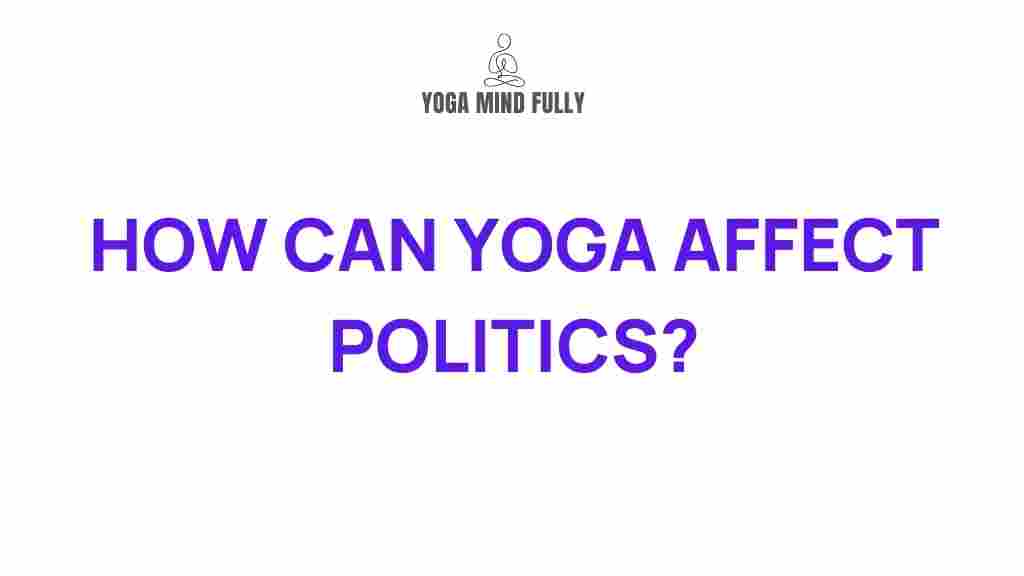The Profound Influence of Yoga on Political Decision-Making
In today’s fast-paced world, decision-making is a skill that demands clarity, focus, and balance. Surprisingly, yoga, an ancient practice known for its physical and mental benefits, is emerging as a transformative tool for political leaders and policymakers. From fostering emotional intelligence to enhancing strategic thinking, yoga holds untapped potential for shaping decisions that affect societies and nations.
This article delves into how yoga impacts the intricate process of political decision-making and why its principles are increasingly embraced in leadership circles.
How Yoga Transforms Decision-Making
1. Cultivating Mindfulness and Presence
Mindfulness is a cornerstone of yoga practice. By focusing on the present moment, yoga helps leaders minimize distractions and approach issues with heightened awareness. This mental clarity is essential for evaluating complex political scenarios and making informed decisions.
2. Enhancing Emotional Intelligence
Emotional intelligence plays a pivotal role in navigating political challenges. Regular yoga practice encourages self-awareness and empathy, enabling leaders to better understand their own emotions and those of others. These qualities foster collaboration and effective conflict resolution.
3. Managing Stress and Pressure
The political arena is synonymous with high stakes and immense pressure. Yoga’s breathing techniques and relaxation methods provide leaders with tools to manage stress, ensuring they remain calm and composed during critical moments.
Step-by-Step Process: Integrating Yoga into Leadership
Step 1: Start with Simple Breathing Exercises
Deep breathing, or pranayama, is an effective way to begin incorporating yoga into your routine. Exercises like alternate nostril breathing can calm the mind and reduce anxiety.
Step 2: Focus on Postures for Mental Clarity
- Tree Pose (Vrikshasana): Enhances balance and focus.
- Warrior Pose (Virabhadrasana): Builds strength and determination.
- Child’s Pose (Balasana): Promotes relaxation and introspection.
Step 3: Practice Guided Meditation
Guided meditations are particularly beneficial for leaders. They help align thoughts and set a purposeful intention, essential for decision-making in the political landscape.
Step 4: Commit to Consistency
Consistency is key. Allocate a specific time daily to practice yoga. Even 15 minutes of focused practice can yield significant benefits over time.
Troubleshooting Tips for Beginners
1. Overcoming Time Constraints
Leaders often struggle with time management. Start with short sessions and gradually increase the duration. You can find more tips on managing time effectively in our leadership resource guide.
2. Finding the Right Practice
Not all yoga styles suit every individual. Experiment with different approaches, such as Hatha, Vinyasa, or Yin Yoga, to discover what resonates with you.
3. Staying Committed
It’s easy to lose motivation. Engage with yoga communities, attend workshops, or follow online classes to stay inspired. Learn more about maintaining consistency in yoga from reputable sources like Yoga Journal.
Conclusion: Embracing Yoga for Better Leadership
Yoga is not just a physical exercise; it is a holistic practice that nurtures the mind, body, and spirit. For political leaders, it offers a pathway to improved clarity, empathy, and resilience—qualities essential for making impactful decisions.
As we continue to explore innovative approaches to leadership, integrating yoga into decision-making frameworks can drive transformative change. Whether you are a policymaker, corporate leader, or someone aspiring to lead, yoga holds the potential to enhance your journey profoundly.
This article is in the category Mind & Body Balance and created by YogaMindFully Team
